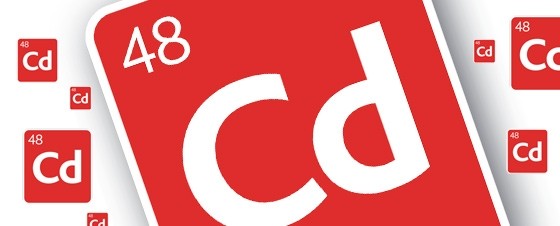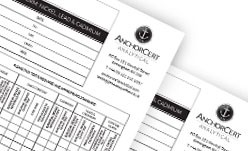Legislation - Cadmium
LEGISLATION - CADMIUM
Cadmium is a heavy metal which has been widely used for over a century in both fashion and fine jewellery products. Small amounts of cadmium may be added to alloys used to make jewellery to impart specific technical and functional attributes to the metals. It may be present in jewellery as part of the metal alloy, solder, or gold coating for electroforming/electroplating, or as a pigment or stabiliser in non-metal components.
Cadmium has long been recognised as a toxin and a known carcinogen, harmful when it is ingested or inhaled. Increasing concern with regard to consumer and employee health and safety has pushed it into the spotlight. This has been accelerated by a recent trend for Far East manufacturers to substitute cadmium for lead, which is now tightly restricted in many countries. As a result new legislation has been introduced and jewellers making, importing and selling both fine and costume jewellery need to be aware of these.
EU LEGISLATION - REACH Directive
European Legislation under the REACH Directive limits the CONTENT of Cadmium in jewellery and other articles.
 Regulation, EU 494/2011, enforceable from 10th December 2011 restricts cadmium content in jewellery to 0.01% (100 mg/kg) by weight of metal and this applies to “metal beads and other metal jewellery components, metal parts of jewellery and imitation jewellery articles and hair accessories (i.e. bracelets, necklaces, rings, piercing jewellery, wrist-watches, wrist-wear, hair accessories, brooches, cufflinks). The regulation also restricts Cadmium in all plastic materials and brazing fillers to 0.01% (100 mg/kg) by weight and Cadmium in all paints and recovered PVC to 0.1% (1000 mg/kg) by weight. Jewellers at all stages of the supply chain clearly need to respond by ensuring their products are compliant.
Regulation, EU 494/2011, enforceable from 10th December 2011 restricts cadmium content in jewellery to 0.01% (100 mg/kg) by weight of metal and this applies to “metal beads and other metal jewellery components, metal parts of jewellery and imitation jewellery articles and hair accessories (i.e. bracelets, necklaces, rings, piercing jewellery, wrist-watches, wrist-wear, hair accessories, brooches, cufflinks). The regulation also restricts Cadmium in all plastic materials and brazing fillers to 0.01% (100 mg/kg) by weight and Cadmium in all paints and recovered PVC to 0.1% (1000 mg/kg) by weight. Jewellers at all stages of the supply chain clearly need to respond by ensuring their products are compliant.
US LEGISLATION
 Companies exporting to California should be aware of different testing requirements in the Americas.
Companies exporting to California should be aware of different testing requirements in the Americas.
California’s Metal-Containing Jewelry law prohibits the manufacture, shipping, or sale of Jewelry, or offering the jewellery for promotional purposes in California, unless the Jewelry meets the restrictions set forth in the law. A brief summary of those restrictions are as follows:
California’s Metal-Containing Jewelry restricts the Cadmium content as follows – Children’s Jewelry must not contain more than 0.03% (300ppm) Cadmium. AnchorCert Analytical is UKAS accredited to carry out this method for this regulation.
CADMIUM’S USES
Cadmium is used for various specific reasons. With such widespread use the jewellery supply chain needs to audit and review its practices in respect of cadmium. Its prevalence is apparent when gold and sterling silver scrap is melted . While levels are generally low, below 300 ppm for 95% of the time, cadmium may be present at levels of 1000 ppm and occasionally very much higher in both gold and silver melts.
Its main uses are:
- De-oxidiser in silver alloys.
When silver is melted it takes up oxygen – about 22 times its own volume – and the copper that is usually alloyed with it also introduces more oxygen in the form of cuprous oxide. This creates the phenomenon known as spitting or sprouting when silver cools after pouring. The presence of oxygen also interferes with rolling and drawing operations. Cadmium has proved to be the most effective de-oxidiser to resolve this problem.
- Improved malleability Sterling silver alloys containing cadmium are significantly more malleable and ductile, rendering them easier to spin and to draw. Cadmium may also be alloyed with tin to improve melt and flow. This property has also resulted in cadmium being widely used in solders and such solders melt and flow better at a lower temperature than non-cadmium products. They are also widely used in gold and silver solder-filled wire.
- Colour Cadmium is used in gold alloys in place of silver to obtain different shades of colour such as pale-yellow or pink. A certain mixture of cadmium with gold gives a green alloy, like the Cu-Cd-Ag-Au mixtures. Greenish 18ct gold alloys have traditionally been obtained with mixtures containing as much as 12.5% cadmium.
- Adhesion and corrosion resistance Cadmium is used in some plating processes to promote adhesion and minimize corrosion. Plating baths may contain trace amounts of cadmium from earlier platings that could be incorporated in the final plated item.
- Paints, colours, and glaze Cadmium in various forms is used for colouring glass and porcelain and in the preparation of enamels. In addition to use in metals, solder, and solder-filled jewellery, cadmium is used as a stabilizer in certain plastics and may be used as a pigment in crystal, glass, ceramics, enamel or plastics, or in paint and surface coatings.
Your item has been added to the basket
You need to create an account, or login before you can add this item to your basket.





